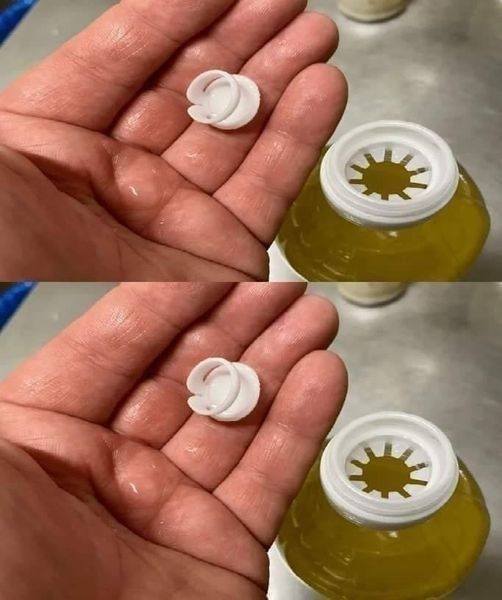ADVERTISEMENT
Sure! Here’s an article for “I Always Threw Away the Oil Cap: A Colleague Explained to Me What It Was Actually For”:
I Always Threw Away the Oil Cap: A Colleague Explained to Me What It Was Actually For
We’ve all been there — you open a bottle of cooking oil, and the first thing you do is remove the cap, usually thinking it’s just a piece of packaging to toss in the trash. But what if I told you that the little plastic cap inside your oil bottle isn’t just some disposable extra? What if it’s actually designed to serve a very important purpose that could make your cooking experience a lot more efficient?
I learned this valuable lesson the hard way, thanks to a conversation with a colleague who explained what that seemingly insignificant piece of plastic is really for. Now, every time I open a bottle of oil, I think back to that moment and wish I had known sooner! Here’s the story of my discovery and why that oil cap is something you should never throw away again.
The Mystifying Oil Cap: What It Actually Is
So, what’s the deal with the oil cap? If you’re like me, you might have assumed that it was just a piece of packaging designed to prevent spills during transport. However, it turns out that the small plastic cap inside the oil bottle has a far more practical use than I ever realized.
That little cap is actually a drip-control cap or pour spout stopper, and it’s designed to help you control the flow of oil when you’re pouring. It’s often shaped like a small, perforated disc with tiny holes that slow the oil flow, allowing for more precise pouring. This not only helps reduce messes but also ensures that you don’t waste excess oil while cooking.
Why You Should Keep the Oil Cap:
Here are a few reasons why you should always keep that little cap intact when you open a new bottle of oil:
1. Prevents Overpouring and Waste
When you don’t have that drip-control cap, it’s easy to pour out more oil than you need, which can lead to wasted ingredients and excess calories. The cap helps slow the flow, ensuring that you pour just the right amount. This can be especially useful when you’re working with oils that are more expensive or when you’re trying to control your portion sizes in cooking.
2. Reduces Mess and Spills
We’ve all had that moment when we accidentally pour too much oil and it drips down the side of the bottle, leaving a greasy mess on the counter. With the oil cap in place, it helps control the stream of oil, reducing the chances of spills and making your kitchen cleanup much easier.
3. Keeps Oil Fresh Longer
When you remove the cap completely, it can expose the opening to air, which may cause the oil to oxidize and go rancid more quickly. The oil cap, by reducing the opening size, helps preserve the oil’s freshness for a longer period.
4. Helps You Avoid Drips on the Bottle
Ever noticed how the bottle of oil often has little greasy streaks running down the side after you’ve used it? This happens because excess oil drips down after pouring. The cap helps prevent these drips from happening, keeping the outside of your oil bottle cleaner and more hygienic.
What Else Can the Oil Cap Be Used For?
Besides its obvious function as a pour-control stopper, there are a few other surprising ways you can use the oil cap:
- As a Temporary Sealer: If you’ve finished using the oil but haven’t fully screwed the cap back on, you can use the drip-control cap to temporarily seal the bottle. It can help avoid spills during storage or transport.
